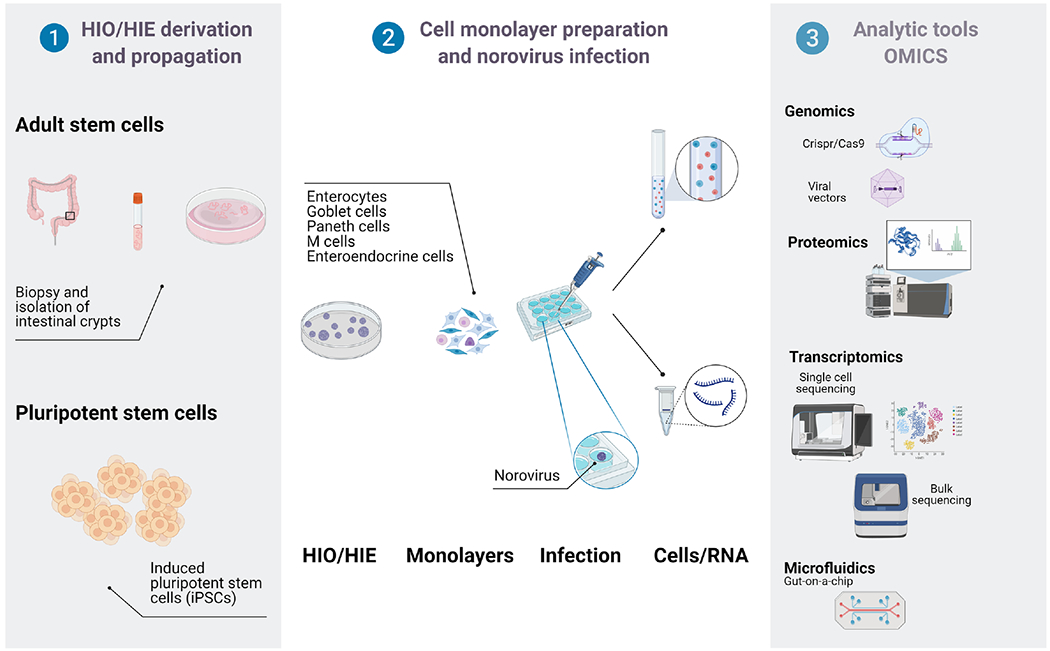Fig. 2.

Application of human intestinal enteroids/organoids (HIE/HIO) in understanding the immune response to human norovirus infection. HIE/HIO can be applied in multiple ways to investigate the immune response to norovirus infection and determine host antiviral factors that restrict norovirus replication. HIE and HIO are derived either from adult intestinal biopsies, or adult induced pluripotent cells (iPSCs). Once HIE/HIO are propagated and differentiated, they can be infected with human norovirus. The cells can also be genetically manipulated using CRISPR/Cas9 or viral vectors to create mutant cell lines that can also be used in norovirus studies. Cells and RNA derived from infected HIE/HIO can be analysed for transcriptional changes using RNA sequencing. Similarly, the cells can also be subjected to proteomics-based analyses to investigate effects of norovirus infection on expression. Another potential application of HIE/HIO is measuring metabolites during norovirus infection using gut-on a chip technology. Created with BioRender.com (accessed on 12 October 2021).
